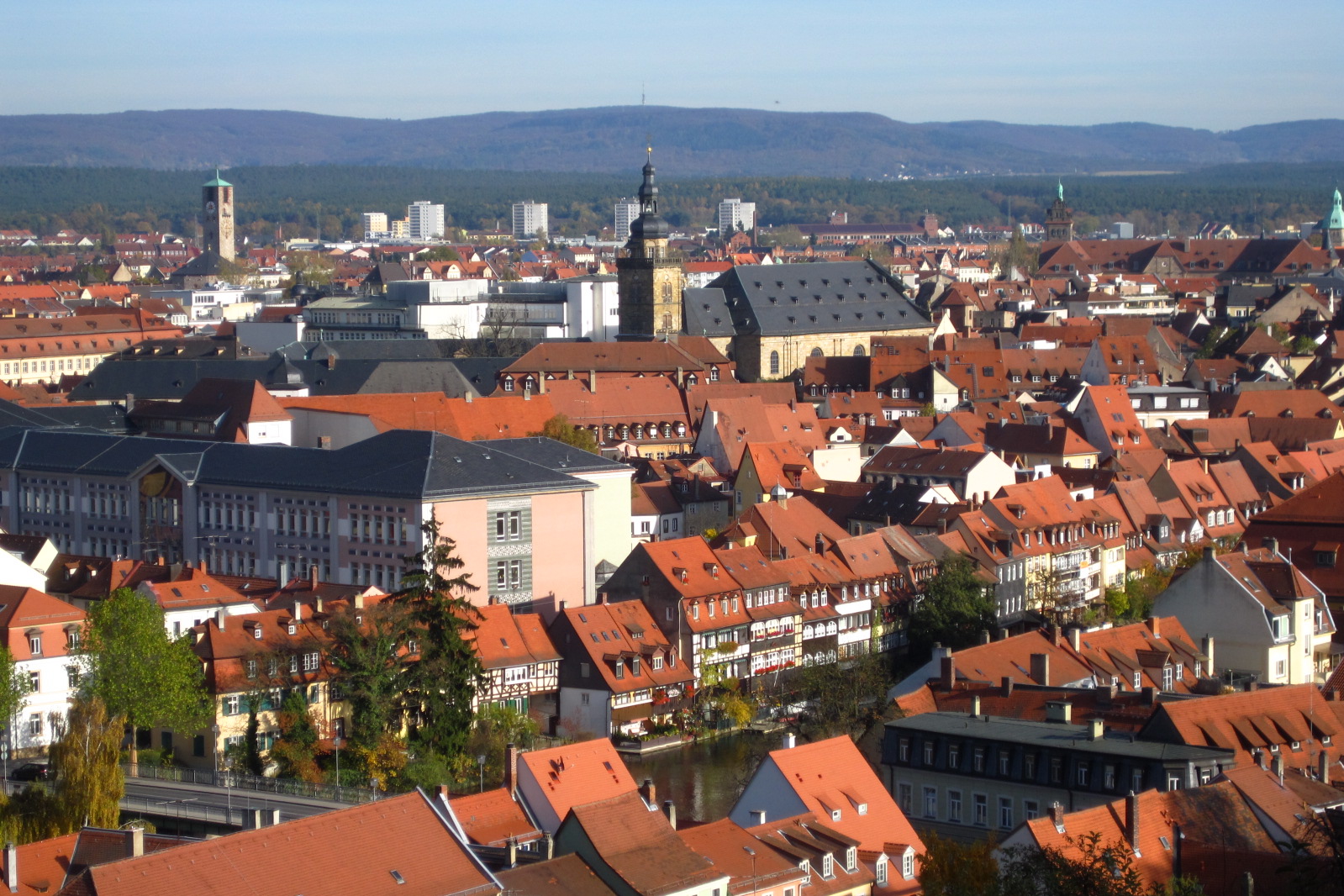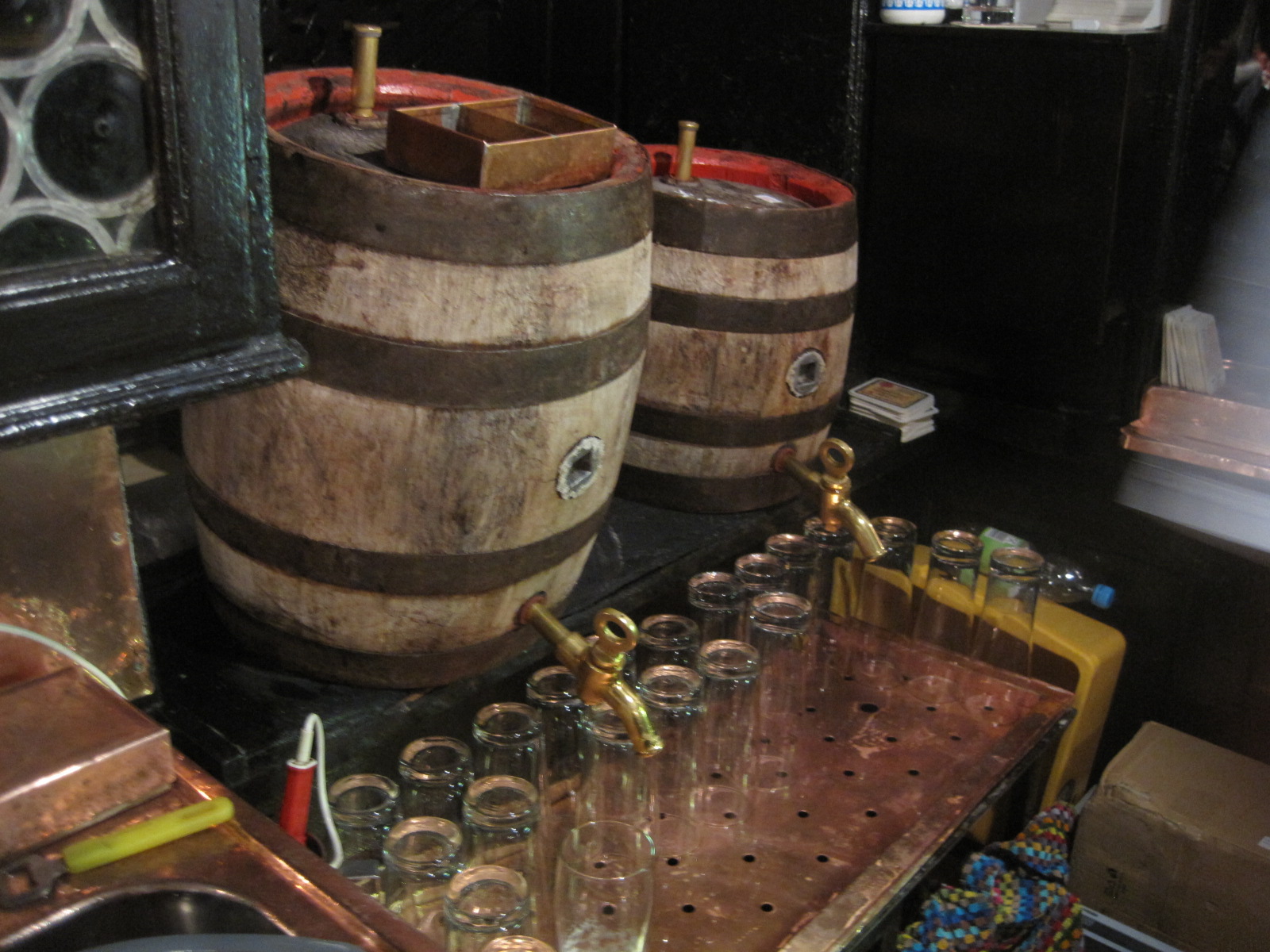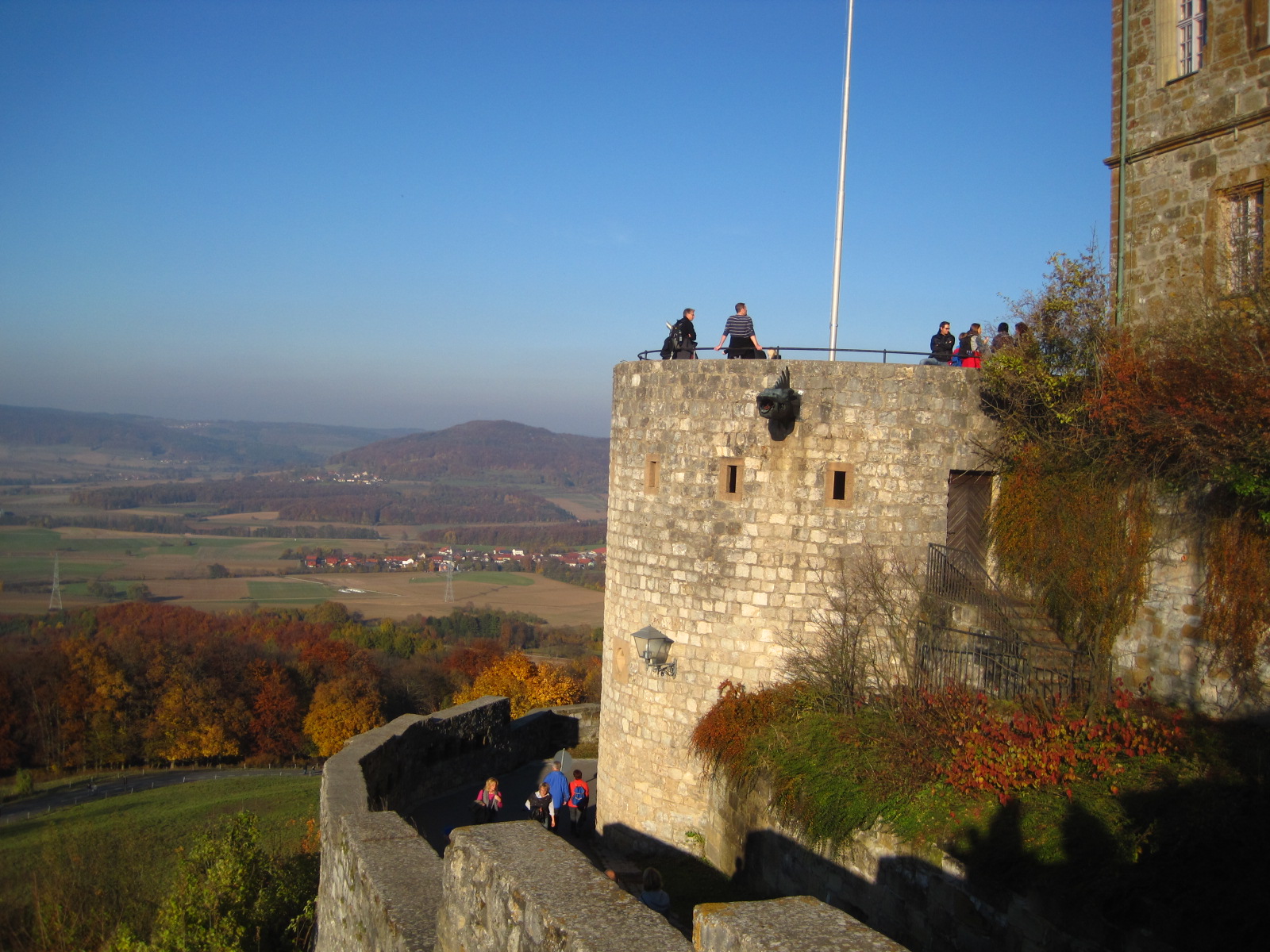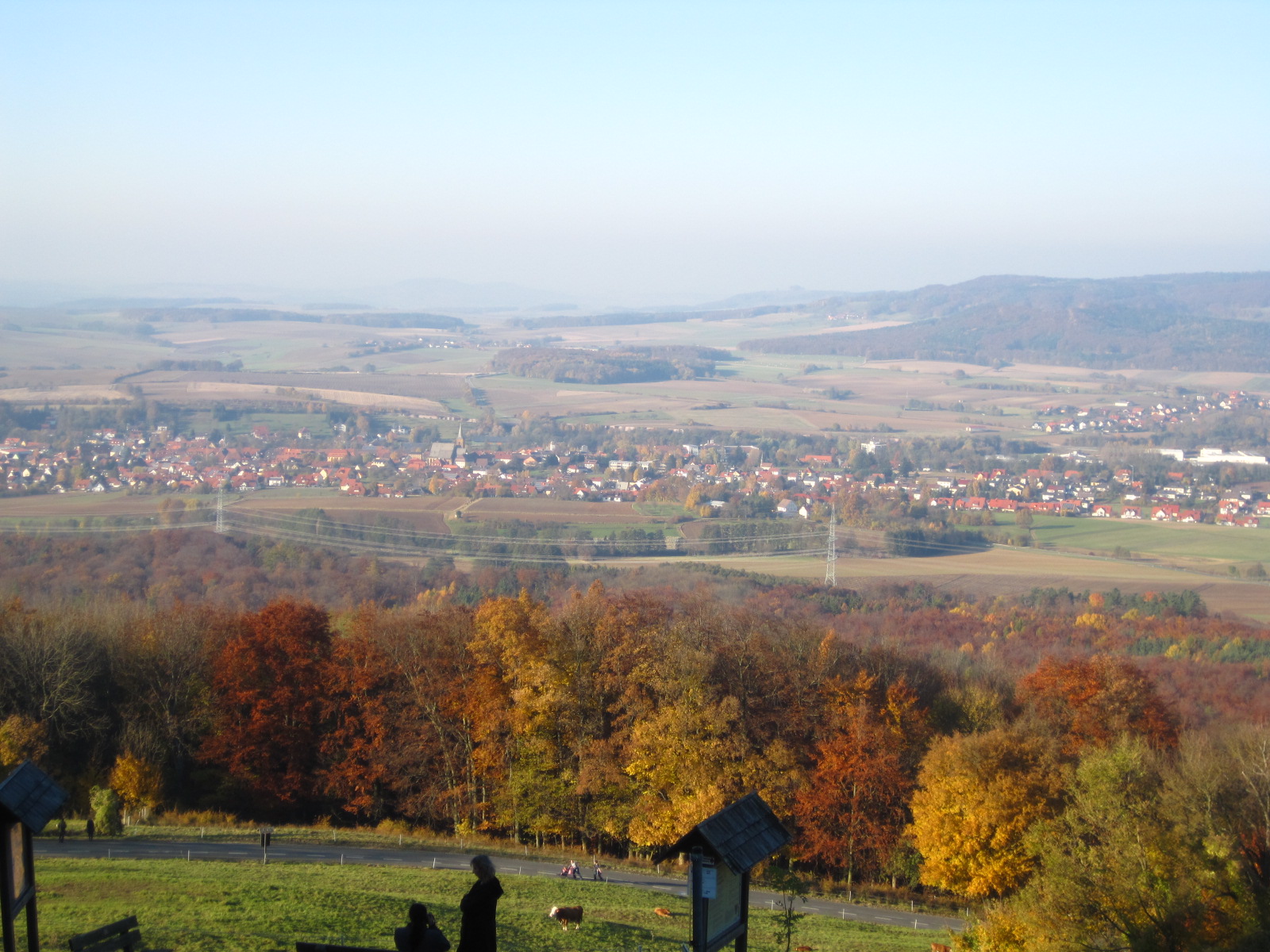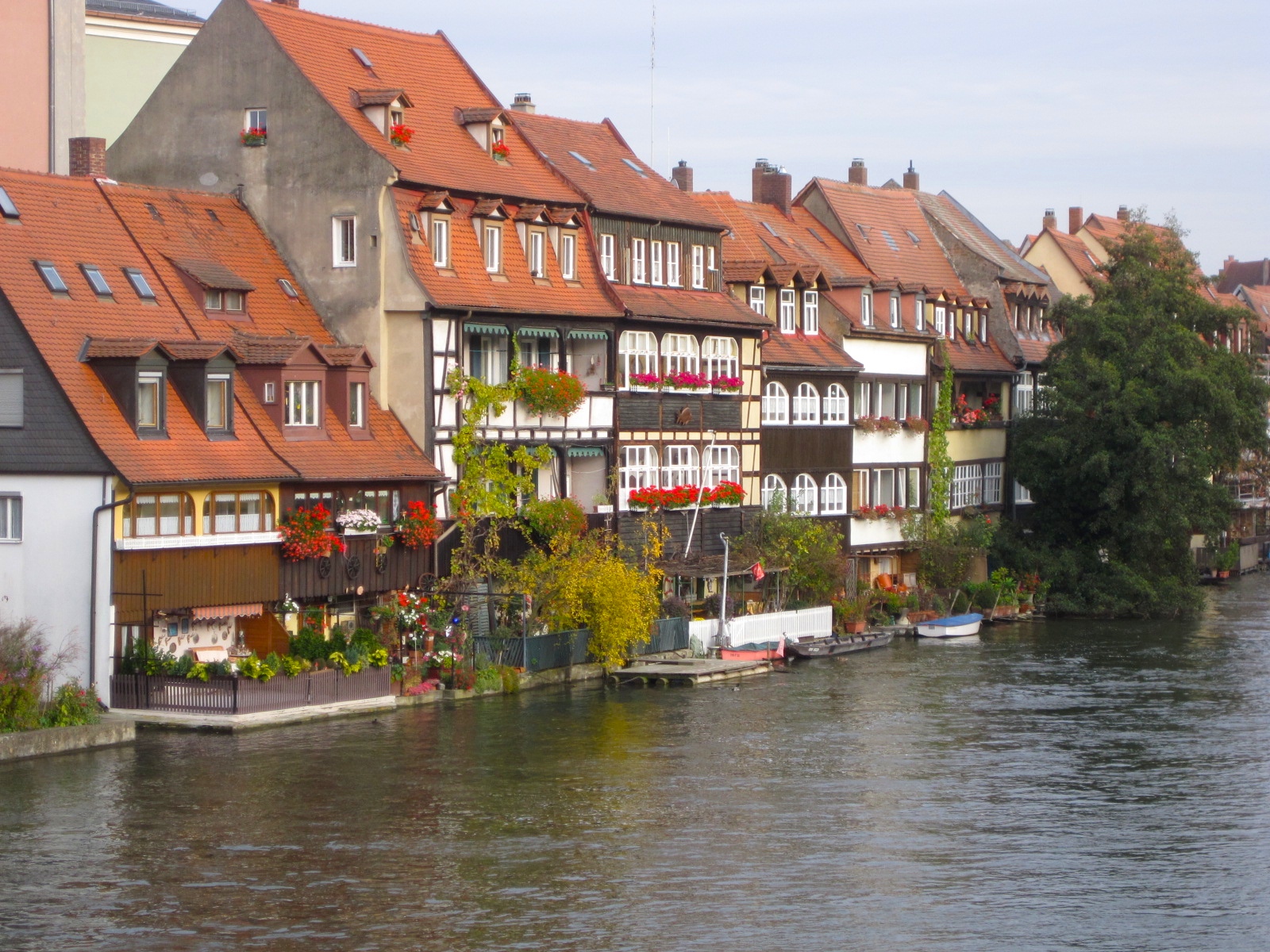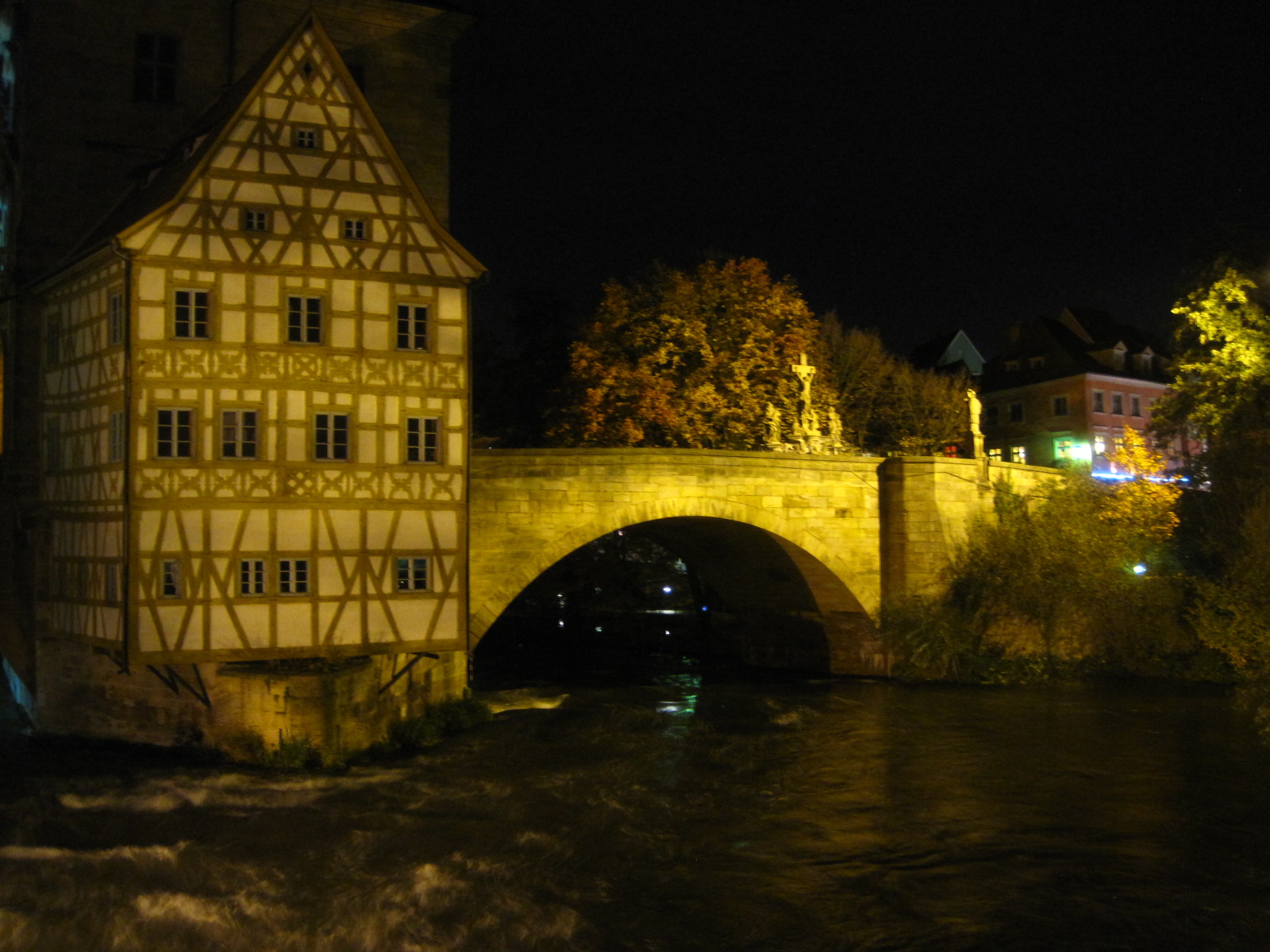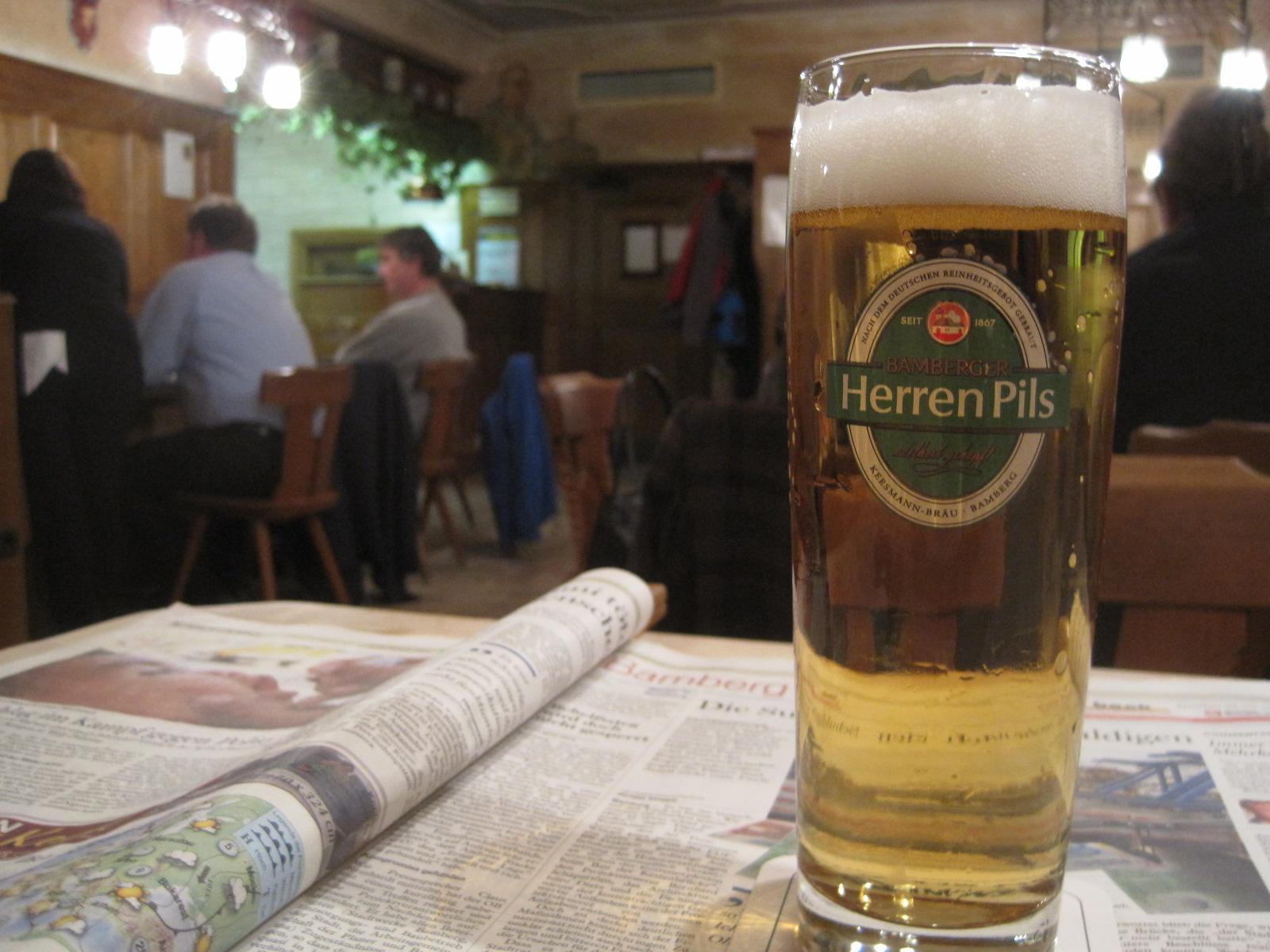Why Bamberg?
In addition to myself, I posed this question to two other experts on Bamberg: Josh Oakes and Diane Catanzaro. Below, in our words, is the answer...
Why Bamberg?
By Josh Oakes
Josh Oakes and Sunshine Kessler enjoying Schweinhaxe at Spezial Brewery taproom.
You cannot ask for a better beer destination than Bamberg. The beer experience is one of a kind, and there aren't too many places left you can say that about. How good is it? My girlfriend and I, both avid beer geeks, lived there for six months. When we wanted to go traveling around the world, Bamberg was the first place we stayed, and we were there all summer.
The first thing you have to know is that there are a lot of breweries. In town, there are more than ten breweries for 75,000 people, which is a pretty good ratio. But it's not just that. In Bamberg kreis (county) there are another 50-60 breweries, give or take. When we lived there, we would ride our bikes out into the countryside. It's a traditional agricultural area, and in a lot of villages the only businesses are a butcher, a baker and a brewer.
This adherence to agricultural roots is embodied in the beer itself. There are fewer places in the world where the beer is made to such a consistently high standard. A lot of the German beers you get in America are either pilsner or hefeweizen, and there's not much to choose between them. But the beers in and around Bamberg are highly individualistic, rustic in character, and a real joy to drink. There's are hoppy kellerbier, rustic landbier, in the fall they have the most amazing pale bocks, and of course there's the famous rauchbier.
You'll want to take your time getting to know the rauchbier. If you're like me, you love smoked things. So beer made with smoked malt is just magical. If you're not convinced, the locals will tell you that you just need to have a couple more glasses in order to appreciate it. But for most people, it shouldn't take more than the first sip. You must visit Schlenkerla, the most famous smoke bier house, but there's quite a few other examples that you might find in your travels as well.
Franconia is a very traditional area of Germany, and that's a big part of its appeal. It's not just the beer that is rooted in history. Take the city itself. It's a UNESCO World Heritage Site, and it features one of the richest collections of unspoiled architecture in Germany. A lot of cities, like Nuremberg to the south, were flattened in the war. But Bamberg largely escaped bombing and remains one of the best historical cores in Germany, right down to the famous city hall in the middle of the river.
At this point, I've already told you that you'll be drinking some of the best beer in the world in one of the most beautiful towns in Europe. That's got to be a draw. But what about the rest of the culture. Well, for one, Germans go to Bamberg. It's a big site for them, because it is one of the most quintessentially German towns. If most of Germany is modern, suburban and industrial, Bamberg is historic, folksy and rural. The locals have a cute dialect, when you're in the countryside you don't need to lock your bike, and it just feels like you could be drinking in the 19th century.
Even the food is this heavy, rich authentic country fare. Forget currywurst and doner kebabs, in Bamberg they eat the serious old-fashioned German food. Schweinhaxe is king – if you've never had roast pork knuckle, you are in for a treat. In the spring, every menu has white asparagus (spargel) – Germans love it. In the fall, the cuisine of the forest rules – duck, goose, venison and of course wildschwein. They'll have to roll you onto the plane.
In the summer, you'll find a lot of breweries empty. That's because they drink outdoors. Every brewery has a keller. Traditionally, this is where a brewery would lager its beer, using caves dug into the hillsides. So the brewery had a piece of land on a forested hillside, and they set up tables for al fresco summer drinking. Drinking at the kellers is absolutely an essential part of the Bamberg experience. There's even a couple in town – Spezial's keller has a jaw-dropping view over the town, and right nearby is the Wilde Rose Keller, a classic German keller with long tables under chestnut trees. And that's not to speak of the festivals. In nearby Forchheim, they have Annafest, which is a local folk festival on a hill with a dozen or so brewery kellers. There's Sandkerwa, which is in Bamberg every August. There's beer, pork and of course the fishermen's jousting on the river. It's the perfect way to end the Bamberg summer.
There is so much to recommend about Bamberg. Aficionados typically spend a lot of time visiting, coming back year after year. Once you get the taste of that Bamberg beer, you're pretty much ruined for lagers back home. It's just never the same after that, and you find that you have to come back again and again. You'll have your favorite breweries, and talk about them with other people in the know. Names like Griess, Ganstaller, Wichert, Knoblach, Witzgall, Weiherer, Göller, Kraus, St. Georgenbrau and zur Sonne may be more or less unknown now, but you will say those names and others with all the reverence of the classic lambic makers or Trappist monasteries by the time you leave Bamberg.
Honestly, Bamberg is one of those places that fully lives up to its reputation. It's a different world from most of Germany, and that's what makes it special. The beer is better, the culture more unique, the architecture unspoiled. It's just about perfection for the beer lover, and the fact that so few people actually get to experience it only makes it better – you're joining a special club of beer lovers when you take time to roll through that countryside and explore Bamberg beer.
Why Bamberg?
By Stu Stuart
Stu and the seasonal spargel (white asparagus) at the market.
Simply put, Bamberg, Germany, is amazing on so many levels: Beer, food, scenery, geography, history, architecture, hospitality, tradition and culture. Located in Southern Germany in the north of Bavaria, it has been a popular destination for Europeans for more than a thousand years, but is relatively undiscovered to the rest of the planet.
For beer enthusiasts, there’s no place like it. Imagine you are a fan of Mickey Mouse. You love Mickey Mouse and everything about him. Then one day you discover there has been this place called Disneyland that’s been around forever, but you never knew about it. You go there and it’s all about Mickey and his friends. How could this be that his place existed and you never knew about it? That’s what Bamberg is to beer lovers. It’s Disneyland for beer lovers. In fact with its medieval, timbered buildings with red clay-tiled roofs, towering church spirals, castles, panoramic viewpoints, scenic rivers flowing through town and ancient bridges, it may remind you of Disneyland, except this hasn’t been fabricated for your entertainment. This is the real deal. A perfectly preserved medieval city that escaped the ravages of war through the years and now is a UNESCO Heritage city. Its more than 2,000 buildings listed as historic monuments comprise Europe’s largest existing group of historic buildings. Moreover with a palpable beer culture that is present at every turn, from breweries, to taprooms, to beer gardens. Beer is definitely not an afterthought here. It’s the main attraction, with more than10 breweries, numerous beer gardens and dozens of taverns within this compact city of about 75,000 people. And if that were not enough, there’s more than 300 breweries in the outlying countryside within a couple hours of the city, and many of them much closer. One estimate puts the number around 75 breweries within 25 miles of Bamberg. It’s the highest concentration of breweries in the world. It is also the home of Weyemann Specialty Malts.
The region around Bamberg is called Franconia, and it is a time capsule of quaint villages, most of which has their own brewery or breweries.
Then why haven’t you had many of these beer, you may ask? Because most of them are not exported. The are beers made from fresh, pure, natural ingredients, intended to be consumed close to the source and from kegs. Many of them are not even bottled. Many are available just in kegs, and many of those are wooden kegs. These are not new breweries experimenting with a trendy barrel aging program. The barrel program is all they have and have had for hundreds of years. People often ask, what’s new in beer in Bamberg? Nothing. That’s the whole point. These breweries have spent hundreds of years perfecting the different interpretations of their beers. It’s a beautiful thing. And with each glass of beer, you enjoy the pleasurable benefits of the culmination of this brewing culture. It is mind blowing and has to be experienced to be believed and appreciated. Several of the Bamberg beers that are exported that you may be familiar with are Schlenkerla, Mahr’s and Spezial.
While Bamberg is internationally known for its Rauchbier, first-time visitors are surprised to learn that this delightfully smoky beer makes up a very small portion of the wide range of beers available in the region. And while some German cities are famous for only one type of beer, Bamberg and Franconia have a large selection from which to explore and discover.
This very photogenic city of Bamberg is a fairytale land for great beer, the epicenter of German brewing, and should be on every serious beer enthusiast’s beer travel radar. With just one visit there, it’s virtually guaranteed you’ll be back. There’s just too much to see in do with one visit.
Why Bamberg?
By Diane Catanzaro
Initially I was drawn to Bamberg because it is home to one of the most unique indigenous beer styles on the planet, the rauchbier.
Diane Catanzaro
I have, however, returned again and again because Bamberg has much more to offer than just beer culture. The word that best describes Bamberg is authenticity. Its medieval history is preserved in the beautiful architecture of the old town, unscathed in two World Wars, earning Bamberg designation as a UNESCO World Heritage City. Many other cities in Germany look old, but in fact have been rebuilt from the ground up after World War II. Bamberg is the real deal with buildings that are 1000 years old!
The Dom Cathedral, the Old Rathaus (Town Hall), and Altenberg Castle (yes an honest-to-goodness medieval castle) will be appreciated by the culture vultures who don't want to spend every minute visiting breweries!
Bamberg is beautiful, friendly, walkable, and bike-friendly. I love wandering the streets of the old town, along the river, to St Michaelsburg, or "up the hill" to visit the beer kellers (as they call their bier gardens).
Bamberg is justifiably proud of its beer culture, and a visit to the brewery taprooms of Schlenkerla and Spezial should be on every beer lover's bucket list. Then visit the Wilde Rose, Klosterbrau, Fässla, Mahrs, and Griefenklau. I also recommend a visit to a special beer bar, Cafe Abseits as a way to sample the range of new craft beers being produced by small Franconian breweries outside of the city, beers you won't find elsewhere in Bamberg.
I've visited many cities in Germany. Bamberg is the one that I always want to return to, and bring friends so they can experience its charm as well as its beer culture.

